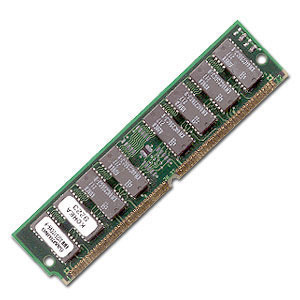SIMM (Single In-line Memory Module)
A SIMM, or Single In-Line Memory Module, is a printed circuit board that is designed to hold multiple RAM chips at a time. SIMMs provide computers with additional RAM that could not be provided by a single RAM chip and allow for a tier-based memory system. While SIMMs have been widely replaced with DIMMS, or Dual In-Line Memory Modules, they are still commonly found in 32-bit personal computers and can even be used in 64-bit computers when two SIMMs are installed together.
How SIMM Works
SIMMs are available in a 30-bit form and a 72-bit form, whereas the 30-bit form consists of 8-bit data buses while the 72-bit form consists of 32-bit data buses. All SIMMs, however, include connectors on both sides of the circuit so that the computer can access the SIMM from either side. However, one side of the SIMM is used only for redundancy and the computer can only connect to the SIMM from one side at a time. Modern SIMMs can have as few as 3 data buses or as many as 8 and may vary between 16 and 70 pins. Modern SIMMs may also use several pins for encoding its memory capacity, speed, and other properties so that devices that connect to it can easily access the SIMM’s specifications.
Applications
SIMMs can be used to provide computers with large amounts of RAM at a time and are a necessary component of any modern computer. Though SIMMs are widely outdated, they provide 32-bit processors with the memory they need to function on a daily basis. Though DIMMs may include additional features, they only replaced SIMMs to negate the need to install two SIMMs in one computer.



Comments - No Responses to “SIMM (Single In-line Memory Module)”
Sorry but comments are closed at this time.